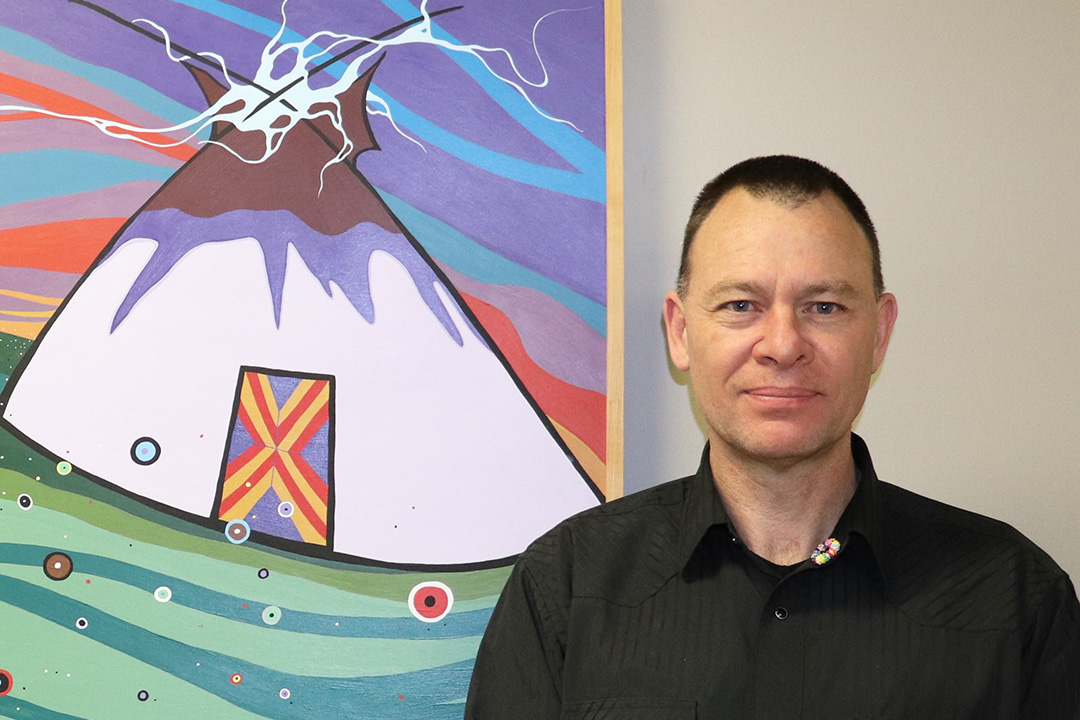
Lambert provides expertise on disaster risk reduction for Indigenous communities
When Dr. Simon Lambert (PhD) arrived in Canada in February 2017, he wasn’t used to enduring such cold weather.
By SHANNON BOKLASCHUKLambert, Indigenous to New Zealand, moved to Saskatoon with his family to take a faculty position at the University of Saskatchewan (USask). He joined the College of Arts and Science’s Department of Indigenous Studies in the middle of a frigid prairie winter, and hopes to one day host other international citizens so they too can experience a true Saskatchewan cold snap.
“Here’s -40. Here’s us driving on snow and ice, and here’s us visiting a community where you can’t make many mistakes at that temperature,” he said. “You have to be equipped in your car; you have to have a plan. You’ve got to be thoughtful—even walking from one building to another on campus.”
Over the past three years, Lambert has acclimated to the Saskatchewan weather and is thriving at USask. Surviving the cold is of particular interest to Lambert, a renowned expert in disaster risk reduction for Indigenous communities. He works with colleagues throughout Canada and around the world in that research area—including promoting Indigenous voices at the UN Global Forum on Disaster Risk Reduction.
As the world continues to grapple with the COVID-19 pandemic, Lambert—who has a PhD in economic geography from New Zealand’s Lincoln University—is examining various responses to the global health crisis, which has highlighted racial and socioeconomic disparities in Canada and far beyond.
Lambert said the risk of contracting and spreading the coronavirus is greater in Indigenous communities that already face issues such as poverty, overcrowding, and inadequate housing. He also noted that people living with co-morbidities, such as diabetes or heart conditions, may face poorer health outcomes if they contract COVID-19 or other viruses.
“We know that we have this greater vulnerability,” said Lambert, a member of the Tuhoe and Ngati Ruapani tribes in Aotearoa, New Zealand. “How can we bring in leaders, Elders, first responders, community voices, and people with experience in the health sector? How can we reduce the risk of COVID for these communities?”
Lambert points to the positive outcomes that were achieved in northern Saskatchewan earlier this year after COVID-19 outbreaks occurred in that part of the province. Health officials and community members worked together to limit entry to, and exit from, affected communities—thus minimizing further exposure to the coronavirus and additional illness and loss of life.
“Generally, I think, Indigenous communities here have done a really good job of minimizing the risks and being very proactive in getting the message out to protect Elders and to be very careful with handwashing, social distancing, masks, and so on,” Lambert said.
Disaster risk reduction for Indigenous communities, with a particular focus on urban Indigenous groups, became Lambert’s research focus nearly a decade ago following the deadly 2011 earthquake in Christchurch, N.Z. He sees Indigenous knowledge as playing an important role in mitigating the impacts of disasters.
“Indigenous communities have found themselves responding to multiple disasters over considerable periods of time—some which Indigenous knowledges certainly give insight,” said Lambert.
“We have Indigenous knowledge and traditional knowledge on drought, on flooding, on wildfires—these are all for Elders and for community leaders to help with the response and the recovery. We’d also like to think those same voices have a role in reducing future risks. Disaster risk reduction is all about a strategic approach to hazards.”
With his expertise in Indigenous health and disaster risk reduction, and with his international connections, Lambert was the perfect fit for another new role at USask. Along with College of Medicine researcher Dr. Caroline Tait (PhD), he now leads the new national co-ordinating centre for the nine Network Environments for Indigenous Health Research (NEIHR) centres across Canada, funded by the Canadian Institutes of Health Research (CIHR).
In the coming months, Lambert—who has been appointed executive director for the national NEIHR co-ordinating centre—will join other USask researchers in moving to Station 20 West in Saskatoon’s core area, enabling Indigenous-led health research to take place in the community.
Lambert is excited about the new challenge, and notes that working in Canada reminds him of working in his home country. He has found it relatively easy to get to know other scholars here as well as to connect with Indigenous communities and leaders.
“Canada is physically very big, but the networks are still very small,” said Lambert. “You end up meeting a dozen experts in your area, and it’s like New Zealand where . . . it’s easier to become known in a network compared to, say, the U.S.—which is just so massive and you just get (overwhelmed) sometimes. Canada is a little bit like Australia, too, where it’s physically big but the networks are tight. You actually get known and you get to know people, and I find it very reassuring.”

